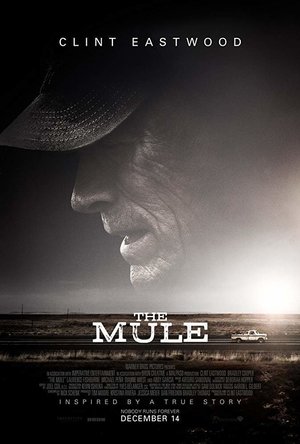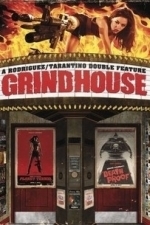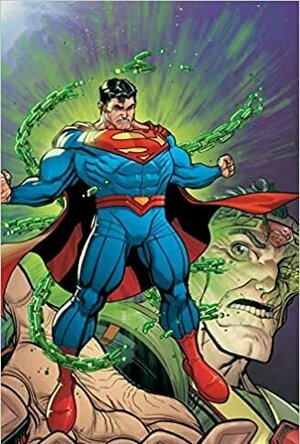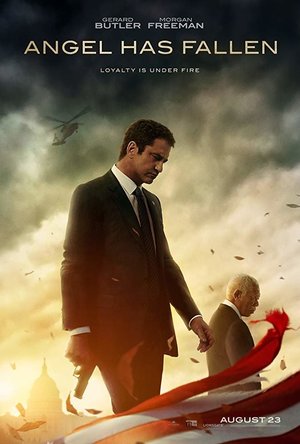Lee (2222 KP) rated The Mule (2018) in Movies
Jan 29, 2019 (Updated Jan 29, 2019)
Eastwood is Earl Stone, a highly successful horticulturist and Korean war veteran who we first meet in 2005. He arrives at a horticulture convention where he charms the ladies, engages in friendly competitive banter with other exhibitors and sneers at the guy promoting a new way of ordering flowers over the internet, before going on to win first prize for best bloom. But over the years all of this success has been at the expense of his family and while he's buying everyone in the bar a drink to celebrate his win, his daughter is getting married, wondering where her father is while her mother consoles her. A life on the road devoted to work has lost Earl the most important thing in life.
Shifting forward 12 years to 2017 and Earl has been forced to close up the flower business, blaming the damn internet for it all. He pays off his farm workers as best he can before heading off to his granddaughters house where she is holding a garden party. His presence only causes tension though - his daughter can't bear to be anywhere near him, while his ex wife takes the opportunity to once again give him a piece of her mind, disappointed that despite a lifelong devotion to work, he now can't even afford to help pay for his granddaughters upcoming wedding.
So when an offer comes his way, working as a mule for the cartel in return for good money, Earl accepts. An old man traveling, with no previous speeding tickets, is less likely to be stopped than the traditional Latinos they usually use, and Earl benefits by continuing his love of traveling the country in his trusty old truck. He tries the charming old man routine with the cartel members he comes into contact with on both sides of his deliveries, with varying degrees of success, but in-between he manages to just enjoy life - driving on the open road, singing along to the radio for hours on end. And the money certainly is good - Earl is able to buy a brand new truck, help pay for his granddaughters wedding and even help prevent a bar he's been going to for the last 50 or so years from closing. He gradually becomes more trusted within the cartel, becoming responsible for transporting increasingly larger quantities of drugs and drawing the attention of the more powerful cartel members. Attending big parties at their lavish houses, dancing with bikini clad girls and engaging in threesomes, this ninety something certainly is making the most of his twilight years! As power shifts within the cartel and Earl gets drawn deeper in, he finds himself having to decide between the cartel and his family. A decision with very different but serious consequences depending on which path he chooses.
All the while Earl is having his fun, the net is closing in on him in the form of a couple of DEA agents played by Bradley Cooper and Michael Peña. Under pressure to secure a bust from boss Lawrence Fishburne, they're getting closer and closer to capturing the cartels top mule. All three of these actors are seriously underused though in what are essentially pretty standard cop roles.
The Mule is a fairly simple movie with no big sense of drama, and certainly no Breaking Bad levels of cartel tension. However, I was never bored at any point and just found myself completely engrossed in it all, swept along by the genial nature of Earl and what was an enjoyable, sentimental story.
Gareth von Kallenbach (980 KP) rated Grindhouse (2007) in Movies
Aug 14, 2019
During this time, the Blaxploitation era as it became known, saw many films become big hits thanks to the films modest budgets and subject matter that was quite different from the films of the day. Aside from Blaxploitation, there were also sexploitation films as well as action and horror films that embraced the urban and youth cultures of the time and were loaded with sex, violence, and anti-establishment themes.
The films were often show nonstop in all night theaters known as “Grind houses”, where repeated showings of prints caused them to have image blemishes as films were usually shown in a city for a week before the same print was whisked off to a new city for even more wear and tear.
Inspired by the classic exploitation films of old, Directors Quentin Tarantino and Robert Rodriguez have teamed up to treat audience to a modern day ” Grind house” experience that comes complete with nostalgic intros and credits as well as movie trailers for exploitation films that the duo has not yet created.
The first film is “Planet Terror” and stars Rose McGowan as a Go Go Dancer named Cherry who is about to have a very bad night thanks to a deal gone wrong between a shadowy soldier (Bruce Willis), and a mysterious scientist (Naveen Andrews).
Before long, Cherry is minus a leg, and living in a town overrun by zombie like creatures, which forces her and a band of survivors to fight the deadly invaders to get to the bottom of the mystery.
The film is packed with gore, action, and enough cheesy lines to make even the most jaded moviegoer wince, yet all is done with loving reverence to the genre films that inspired it.
Rodriguez even includes little glitches in the film to give a sense of realism to the film. Were it not for the starts of today and some slightly better effects work, you could easily believe that this was a film from the era.
The second film is “Death Proof” and it stars Kurt Russell as Stuntman Mike. A man who drives a souped up hotrod and spreads mayhem wherever he goes. While the film does not have much of the signature dialogue that marks past Tarantino films,
it does have its moments and is one of the most demented, and intense car chase stories you will ever see.
I have gone very light on the plot recaps as to be honest, the films both have paper thin plots and characters which do not really warrant much examination.
To do so would be to miss the point of Grind House as the goal was to create two modern exploitation films that were true in character and form to the films that inspired them. Yes, this film had a budget that could have created well over a thousand such films back in the day, and has more stars than Hollywood Bld. But despite this, still would be worthy of those famed theaters of old.
There were many times that I noted the bad acting, lines, and other problems in the films, but reminded myself that flaws were for the most part intended.
I compare the experience to watching “Mystery Science Theater 3000”, in that you need to be familiar with the types of film being featured in order to get the full benefit.
I for one really enjoyed myself and I loved the false trailers that were included in the film as it was great fun not only watching them, but seeing the big name stars who helped create them getting in on the fun.
If you set your expectations accordingly, than Grind House may be the most nostalgic fun you have had at the movies in a long time.

Easy To Use - Adobe Flash Edition
Education and Reference
App
Adobe Flash is a brilliant animation and web tool that is becoming widely used all over the World. ...

I Like Books - 37 Picture Books for Kids in 1 App
Education and Book
App
"WOW... 37 stunning picture books for kids in one app. This is a MUST have for every parent with...

Interior Design for iPad
Lifestyle and Productivity
App
--- Note - for a more professional interior design app, please check out our other app, TapGlance....

BlockyTime - Track your time no need to Start/Stop
Productivity and Utilities
App
BlockyTime, A simple time logger no need to tap Start/Stop. ### App Store Featured of 2016 in China...
Joe Goodhart (27 KP) rated Superman: Action Comics - The Oz Effect in Books
Nov 30, 2020
Since re-discovering my love of Superman (my earliest recollections of the character were one of love and admiration, because he was just so darned GOOD, y'know?) during Bendis taking the reins, I figured reading this book would aid me in what was to come. Catching it on a recent Comixology sale for the Big 'S' was the icing on the cake!
The first story in book, the two-issue story "Only Human", written by Rob Williams, was just meh. It felt like "paint by number", as far as the plot was concerned. Nothing in it made me go, "Whoa! Holy crapola, that was fab!" Nope.
The only reason it was included was due to the inclusion, and overall influence, of Mr. Oz on the story. Outside of that, I saw no reason to include it, other than DC wanted to add more pages (good, bad, or otherwise) for the money spent on purchasing it!
Now, the art by Guillem March was another story altogether. I felt he did a great job of capturing the heroic aspects to Superman, as well as the "human" side, achieving a perfect balance. I also thought the way he drew Lois Lane was also perfect, making her appear to be smart, because, well, she is, right? 'Nuff said. Thank you. Guillem, for helping to make this a 3-Star review instead of just a 2-Star one!
As far as the remainder of the book, which WAS "The Oz Effect, I thought it was fair. Not terrible by any means, but certainly not the kind of Dan Jurgens' helmed story. I felt the dialogue involving Clark and Jon, as well as with Lois, was good, as was the way he handled Perry White. But the reveal for Mr. Oz (no Spoilers, promise!) was just a bit underwhelming!
The character who he really has been done before. Sometimes good, sometimes not so good. This round, I was just like "Hmmm.. Ok, didn't see it coming, but at the same time.." I think a lot of people, myself included, were hoping it would be WATCHMEN's Ozmandyias. *womp* *womp* Nope. And that, dear readers, is the only kinda-sorta Spoiler in this review!
What really made it work for me, as well as aiding that push for the 3-Star review, was the backstory. Even though <i>his name</i> (not gonna say it, but we all know the blue fellow in question) is not mentioned, it is clear who is behind all of this. The fact that he brought this person into the present, tweaking the grand scheme of Everything? Whew! That's heavy! And definitely interest enough for me to stay onboard with Supes, especially with care Bendis is exhibiting with the character as well as the book's main cast.
This was my first time with Viktor Bogdanovic's art style. Quite good, I'd say. He really does a great job at capturing character's emotions, really drawing you into what is going on in that particular panel. Definitely someone I will be looking out for going forward.
So, final verdict, do I recommend this? Yeah, because there's a lot of little bits that owe to the bigger story involving <i>him</i>. However, don't expect to have your mind blown or anything, because it really ain't gonna do that. But, it's good enough to read.
And that, dear readers, is all I have to say about it!
I will be curious to finally read Geoff Johns' DOOMSDAY CLOCK (hopefully, it will conclude in my lifetime!) as I feel a lot more will make sense.
James P. Sumner (65 KP) rated Angel Has Fallen (2019) in Movies
Aug 21, 2019
We see an aging and sore Banning, struggling with the rigors of his profession, torn between his love for his duty to protect the President and the smart, semi-retirement position as Secret Service Director.
This takes a little while to get going compared to most films in the genre, but it isn't too long before everything goes sideways and Banning finds himself on the run from everyone, framed for something we all know he didn't do. The question is: who did it?
Drawing obvious inspiration from classic genre entries like Die Hard, as well as more modern offerings like John Wick, Gerard Butler takes on everyone from both sides of the law as he tries to get to the bottom of the conspiracy.
Aside from the slightly slow start, the pacing of this film is spot-on, mixing balls-to-the-wall action with gripping tension - accompanied by a very clever soundtrack that enhances the experience well.
The dialogue feels real and meaningful. There's nothing cheesy, no scene-filling conversations or anything, which is always a genuine concern with this type of film. Everything is done with a purpose.
I think perhaps too much effort was made to make this a 15-certificate (an R-rating for you lovely Americans). It was more for the language than anything. The violence and fighting was well-choreographed, taking the up-close, gritty approach akin to the Bourne movies, but there was nothing here that wouldn't have made the cut for a 12A. I think they gambled with the post-Deadpool debate of having a wider audience for a 12A vs. the "it's a 15, therefore it must be good because kids aren't allowed" appeal. I'm not saying it ruins the movie, I just think it was unnecessary. The aforementioned Deadpool, for example, absolutely wouldn't have worked if it was less than a 15, so I get why they made it the way the did. But with this, it would've been the exact same film either way, so why cut out a sizable portion of cinema-goers?
That being said, I did really, really enjoy this film. Is it predictable? Sadly, yes. That probably isn't THAT shocking of a revelation, as these types of films tend to follow a similar (and usually winning) formula, but I confess to being a little disappointed that I was able to figure out the main antagonist and the overall "big bad" within three minutes of the film starting. However, to this film's credit, this predictability doesn't take away from the experience at all. It's quite honest about what it is from the get-go, and it simply doesn't care. It does what it sets out to do, and it does it very well - better than a lot of similar movies in recent times. As with all films in this genre, people tend to watch them knowing what they're getting themselves in for, so you can just relax, switch off, and enjoy the ride for a couple of hours.
I can't sign off without mentioning Nick Nolte's turn as Butler's father. His performance, while not surprising, feels almost out-of-place, as it's so damn good he deserves an Oscar nod. He probably won't get one, as films like this tend not to get noticed by the Academy, but let me tell you, he steals every scene he's in, and you feel every word he says. There's an obvious comparison to the character he portrayed in Warrior, alongside Tom Hardy and Joel Edgerton. While he gets nowhere near as much screen time here, he makes the most of what he does get, and it truly is the stand-out performance of the year so far, by a long way.
This film is a solid 7/10, and I highly recommend it. I bumped it to an 8/10 because of Nick Nolte. If I could go back and just watch his scenes again, I would. Grab the popcorn, forget about the outside world... you could do a lot worse at the cinema right now than this.

Smoovie Stop Motion
Photo & Video and Education
App
"Smoovie will help you to create a lesson that your children will remember, whatever your subject." ...

PDF Reader Pro Edition®
Business and Productivity
App
**Winner of the Tabby Awards for best iPad- Productivity/Documents App** PDF Reader Pro Edition is...




Erika (17789 KP) Jan 29, 2019
Lee (2222 KP) Jan 29, 2019